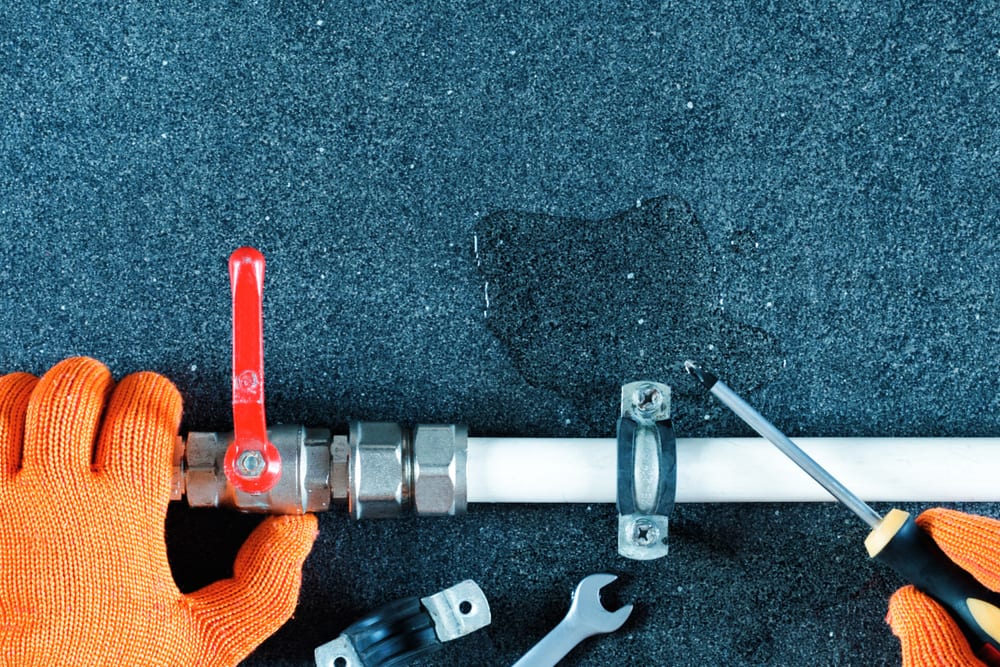6 Ways to Locate Hidden Water Leakages in Your Home
6 Ways to Locate Hidden Water Leakages in Your Home
Blog Article
The article author is making a number of great points regarding Hacks to detect leaks as a whole in this post below.

Early discovery of dripping water lines can mitigate a potential catastrophe. Aside from conserving you cash, it will certainly lessen the irritation as well as aggravation. The moment you find a leak, calling your plumber for fixings is the very best solution. However, some small water leakages might not show up. Below are some hacks that help if you can not discover it with your nude eyes.
1. Check Out the Water Meter
Inspecting it is a guaranteed method that aids you find leakages. If it moves, that indicates a fast-moving leak. This indicates you might have a sluggish leakage that could even be underground.
2. Examine Water Usage
If you spot sudden changes, regardless of your usage being the very same, it means that you have leakages in your plumbing system. A sudden spike in your bill suggests a fast-moving leakage.
On the other hand, a steady rise each month, even with the very same habits, reveals you have a slow-moving leak that's additionally gradually rising. Call a plumber to extensively check your residential or commercial property, specifically if you feel a cozy location on your floor with piping beneath.
3. Do a Food Coloring Test
When it concerns water consumption, 30% comes from toilets. Test to see if they are running correctly. Decline specks of food shade in the tank and also wait 10 minutes. If the color somehow infiltrates your dish throughout that time without flushing, there's a leakage in between the container and also dish.
4. Asses Exterior Lines
Do not forget to examine your outdoor water lines as well. Should water seep out of the connection, you have a loosened rubber gasket. One little leak can throw away heaps of water as well as spike your water expense.
5. Inspect and Analyze the Scenario
Home owners must make it a behavior to examine under the sink counters and even inside closets for any kind of bad odor or mold development. These 2 red flags show a leakage so timely focus is needed. Doing routine evaluations, also bi-annually, can conserve you from a major issue.
Inspect for stainings as well as damaging as many pipelines and appliances have a life span. If you presume dripping water lines in your plumbing system, don't wait for it to intensify.
Early discovery of leaking water lines can alleviate a potential disaster. Some tiny water leakages might not be visible. Examining it is a surefire means that helps you uncover leaks. One tiny leak can throw away heaps of water as well as surge your water bill.
If you think dripping water lines in your plumbing system, don't wait for it to escalate.
How to Know If Your Home Has a Hidden Leak
Water Meter Reveals Inexplicable Water Usage
If you’d like to test whether or not there’s a leak somewhere in your home, you can do this using your water meter. Here is how to conduct the test:
Don’t use any water in your home for at least 30 minutes; this also means not turning on faucets or water-using appliances.
Go outside, and check your water meter for activity.
If your water meter shows that there was activity, even though no one was using any water, this proves that there is a leak in your home.Visible Mold or Mildew Growth
Leaks behind walls create moist, dark environments that allow mold and mildew to grow and thrive. Eventually, you might see mold growth forming on the wall closest to a hidden leak.
If mold is growing in an area that receives a high amount of moisture, such as a bathroom, it may simply be an indication that better ventilation is needed. However, if you see mold growth on a wall or the ceiling in an area where you would not expect, you probably have a hidden leak.
Musty, Mildew Odor
Sometimes you might not be able to see the mold or mildew that is growing as a result of a leak. However, the smell can give the problem away just as easily. If you catch a whiff of something musty, there’s a good chance that old water is collecting somewhere in your home that you can’t see.
Stained/Warped Walls, Ceilings, or Floors
When your home soaks up water, a variety of red flags can become visible, including ceiling stains, bubbling drywall, warped walls, and sagging floors. While these issues can be caused by excess humidity, they can also be signs that a pipe or plumbing connection has started leaking behind your walls.
Inexplicably High Water Bill
After a while, you get a general sense for what your water bill should be. If you own a pool or sprinkler system, your bill will tend to be higher during summer. However, if you receive a water bill that seems especially high, and you can’t figure out what caused it, then you may have a hidden leak somewhere that’s increasing your bill.
https://www.plumbingjoint.com/blog/2019/july/how-to-know-if-your-home-has-a-hidden-leak/

As an enthusiastic reader about Finding hidden leaks, I was thinking sharing that piece was really useful. Sharing is nice. Helping people is fun. We enjoy reading our article about Finding hidden leaks.
Report this page